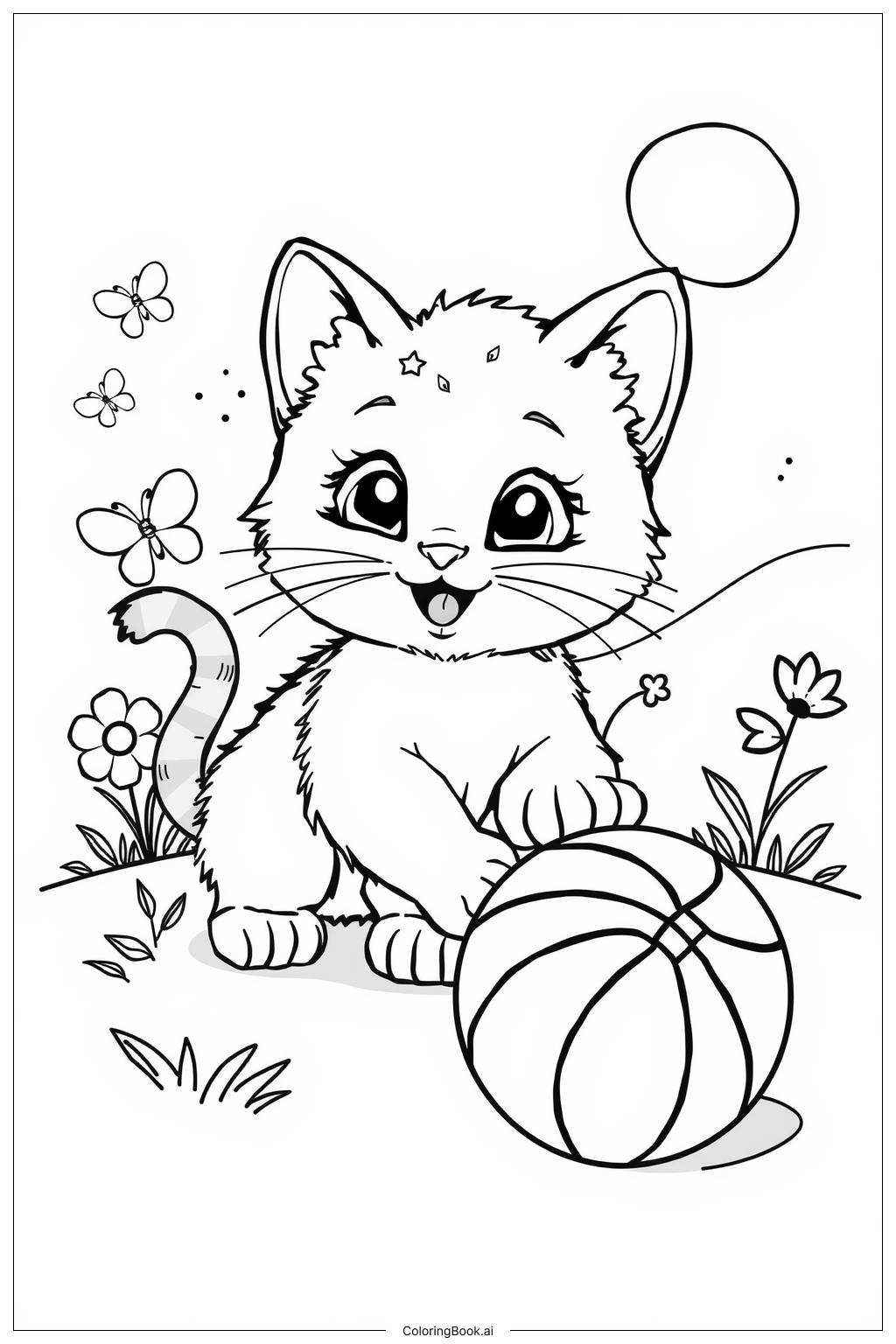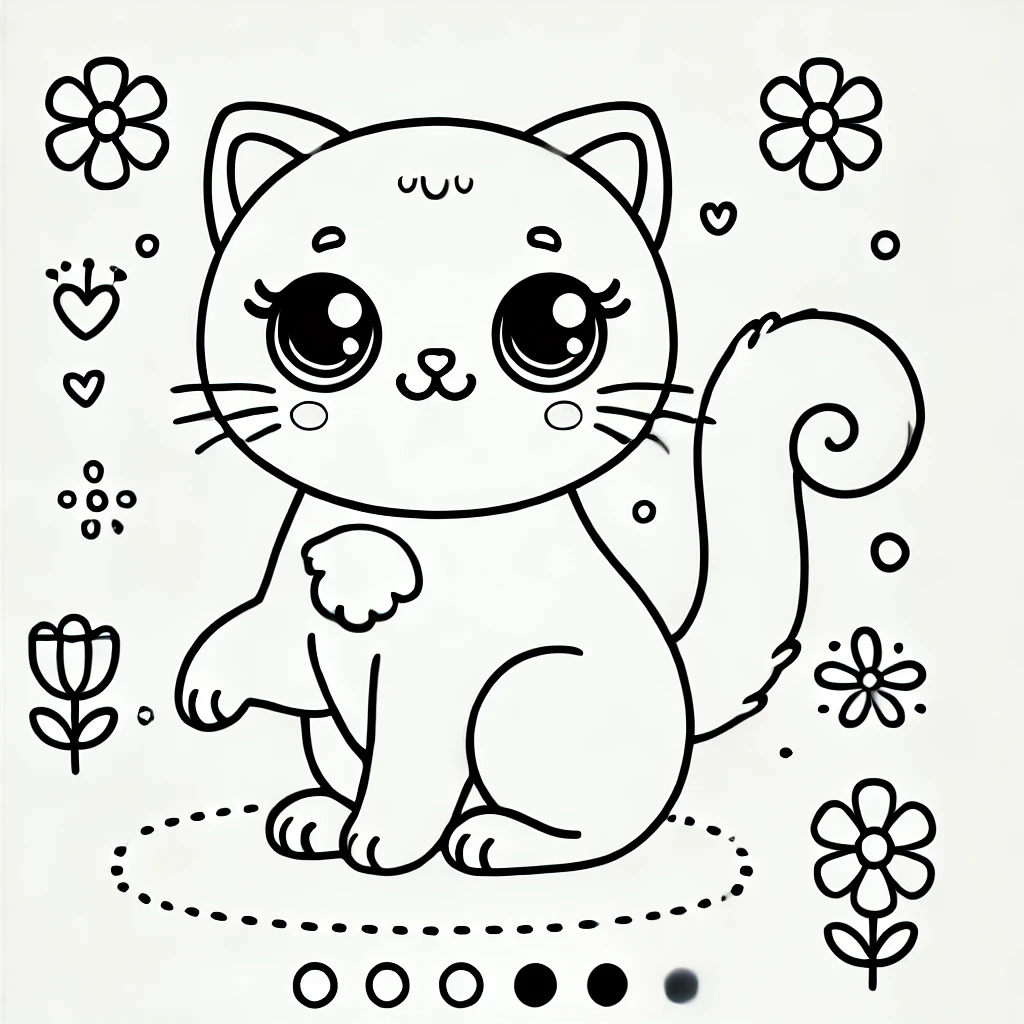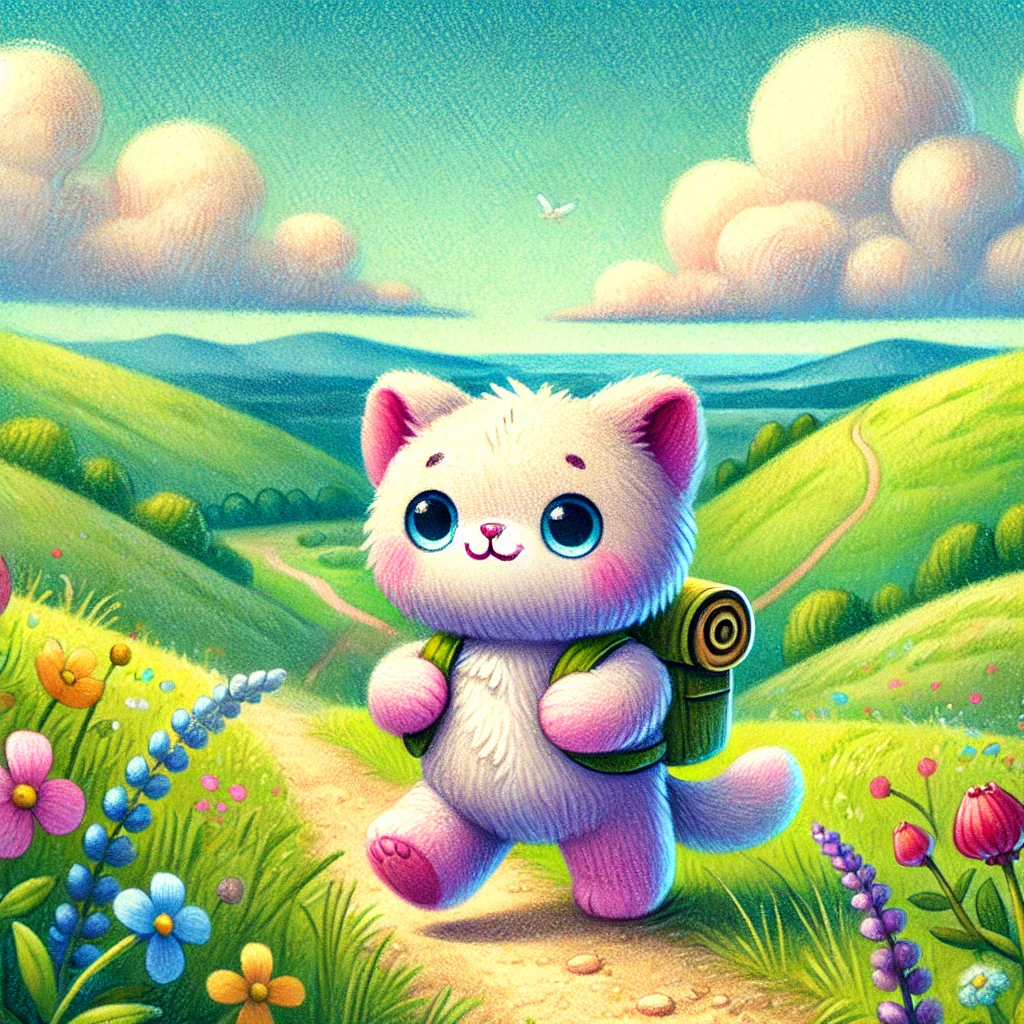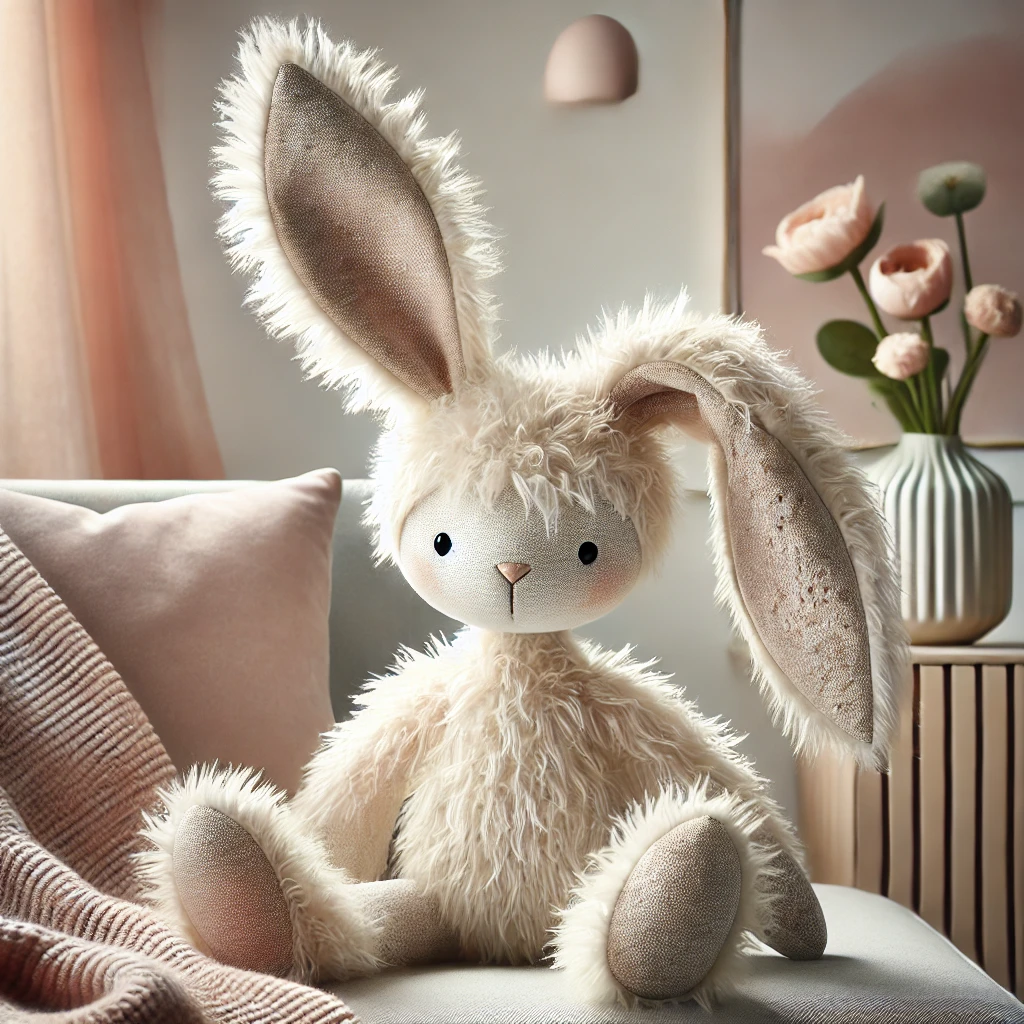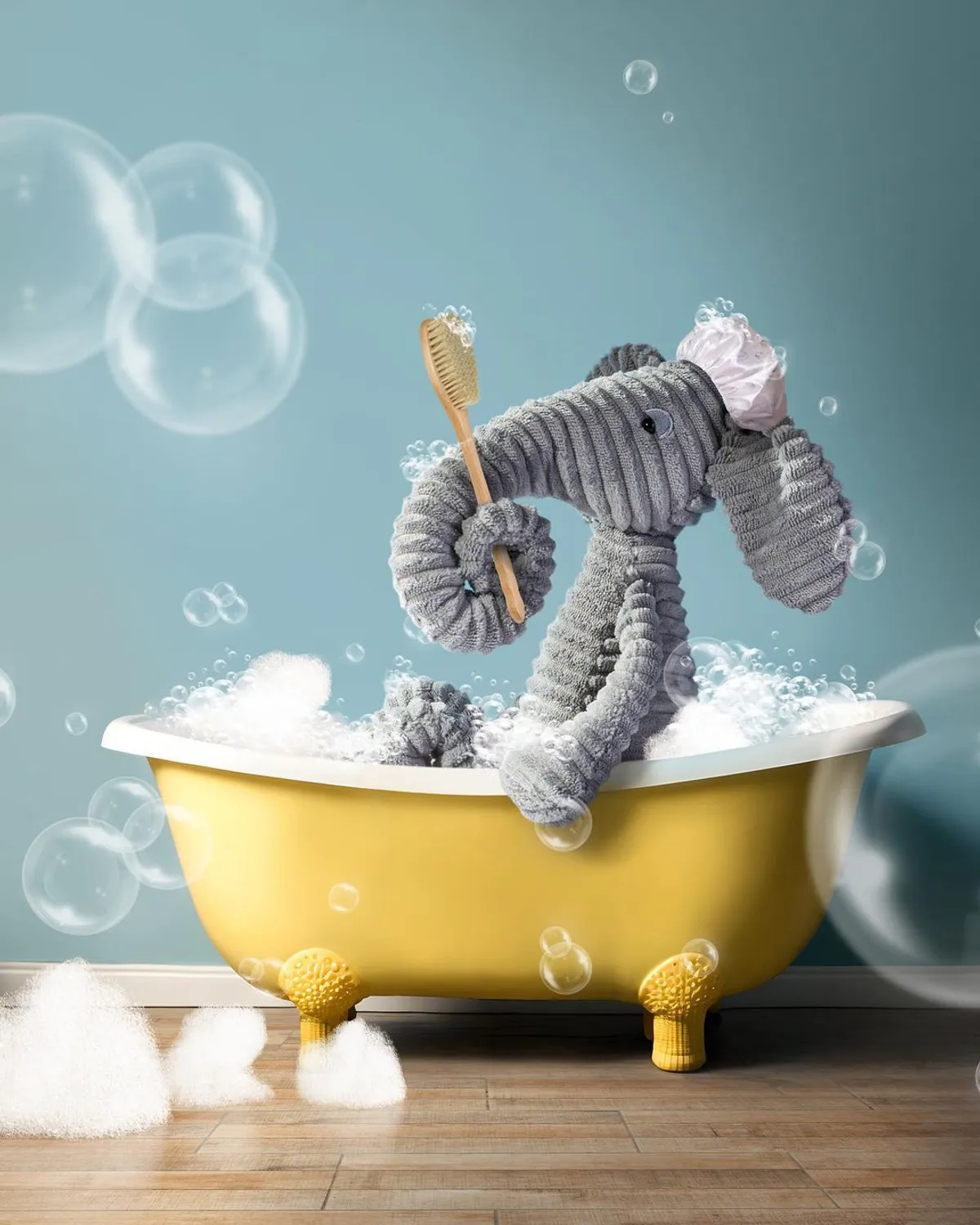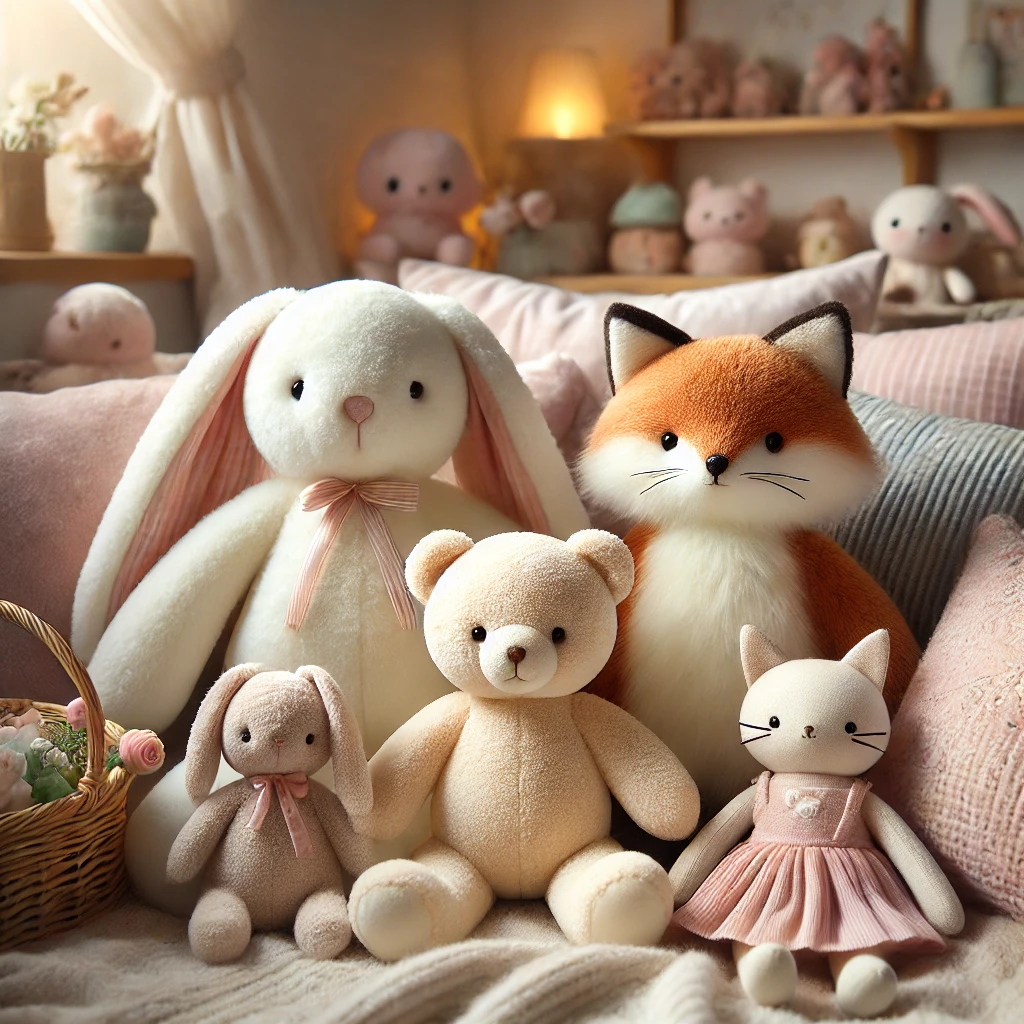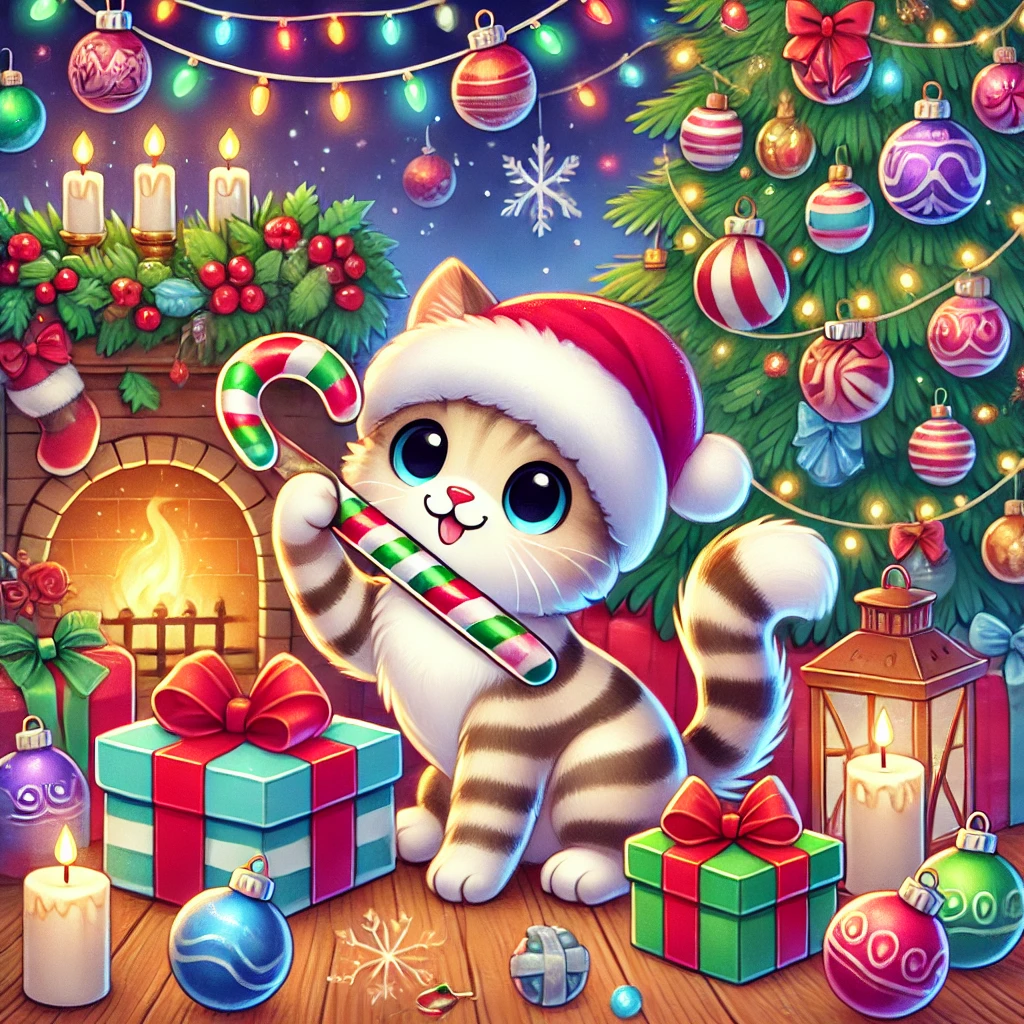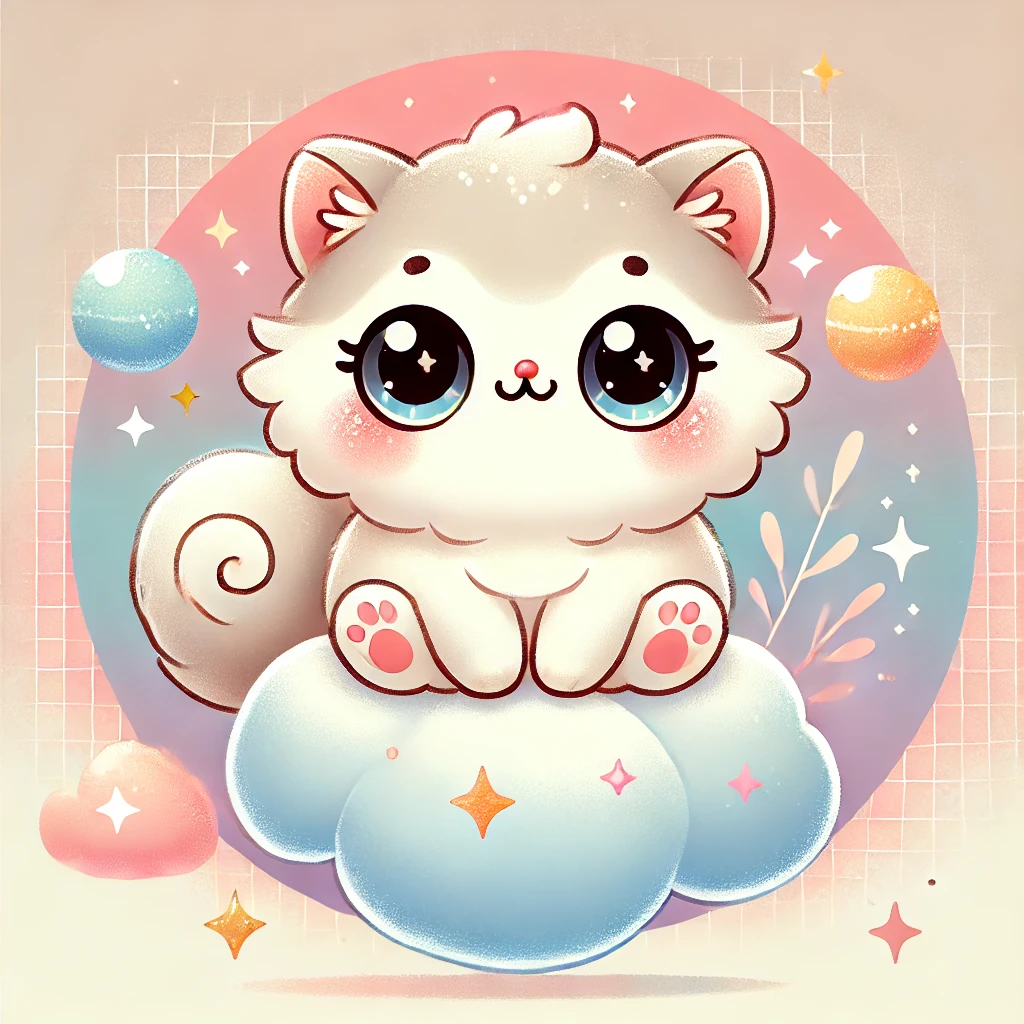The Joy of Coloring Cute Kittens: 10 Pages You’ll Love
Coloring has always been a source of creative expression, relaxation, and fun for people of all ages. Whether it’s painting a canvas, filling in the lines of a coloring book, or even sketching in a notebook, the simple act of adding color can bring a sense of calm and joy. One of the most beloved themes for coloring enthusiasts is cute animals, and among them, kittens are a particularly popular choice. With their adorable features, playful antics, and soft fur, kittens have captured the hearts of people all over the world.
The joy of coloring cute kittens goes beyond just the end result. It’s about the process—the meditative act of filling in each detail, choosing the colors, and bringing the image to life. There’s something uniquely satisfying about seeing a blank page transform into a vibrant scene with each stroke of the pencil or brush. For kitten lovers, this activity is even more enjoyable because it taps into their affection for these furry companions.
In this article, we will explore why coloring cute kittens is such a delightful activity, and we’ll provide a guide to 10 kitten-themed coloring pages that will leave you feeling relaxed and inspired. Whether you are a seasoned artist or just looking for a fun way to unwind, these pages will offer something for everyone. So grab your coloring supplies and get ready to dive into the world of playful kittens and imaginative color palettes.
Why Kittens Are Perfect for Coloring
Kittens are a source of endless charm. Their round faces, big eyes, soft fur, and playful behavior make them irresistibly cute and often the subject of many works of art. For those who enjoy the process of coloring, kittens offer a perfect subject. Unlike more complex or abstract designs, kitten illustrations tend to be accessible and fun, yet they still provide opportunities for creativity.
The natural appeal of kittens lies in their universal cuteness. It’s hard to find anyone who doesn’t smile at the sight of a tiny kitten curled up in a ball or pouncing playfully at a toy. This innate cuteness makes them an ideal subject for artistic expression, especially in a medium like coloring. The ability to give these adorable creatures different colors, patterns, and personalities allows for a high degree of personalization in each coloring page.
Moreover, kittens’ playful and curious nature adds an element of fun to the process. The designs might capture them in various scenarios, whether they’re exploring a garden, chasing a butterfly, or snuggling with a blanket. These moments encourage the colorist to think about the scene’s emotions and energy, which adds another layer of enjoyment. Coloring a kitten might even evoke fond memories of a beloved pet or inspire dreams of the perfect feline companion.
The Therapeutic Benefits of Coloring
Coloring has long been known to offer numerous therapeutic benefits, especially for those seeking a form of relaxation or stress relief. Engaging in creative activities such as coloring allows individuals to disconnect from the pressures of daily life and focus on the present moment. This mindful activity can help clear the mind, reduce anxiety, and promote a sense of inner peace.
When it comes to coloring kittens, these benefits are even more pronounced. The gentle, calm energy of kittens in their various poses and settings naturally lends itself to a soothing experience. Whether the image depicts a kitten lazily napping in a sunbeam or playfully batting at a feather, the act of coloring these sweet creatures encourages a peaceful, meditative state of mind.
In addition, the simple nature of coloring is conducive to mindfulness. As individuals select colors, carefully fill in the shapes, and focus on the details of the kitten’s fur, eyes, and whiskers, they are fully immersed in the process. This focused attention can serve as a form of relaxation, similar to other mindfulness practices like deep breathing or meditation. For people seeking ways to unwind after a long day, the act of coloring kittens offers a soothing escape that can improve both mental and emotional well-being.
The Perfect Pages for Kitten Lovers
Now that we understand the appeal and benefits of coloring cute kittens, let’s explore some of the best pages that any kitten lover will adore. These coloring pages not only feature adorable kitten illustrations but also provide a variety of themes and styles that will keep every colorist entertained. Whether you’re a beginner or a more experienced colorist, these pages offer plenty of opportunities to unleash creativity and relax. Here are 10 kitten-themed coloring pages that are sure to bring joy to your artistic journey.
Choosing the Right Kitten Pages for Your Skill Level
When selecting kitten coloring pages, it’s important to consider your skill level and personal preferences. Some pages feature intricate designs with small, detailed elements, while others offer larger, simpler shapes that are easier for beginners to tackle. Regardless of your skill level, there’s a kitten page out there for everyone.
For beginners, it’s often best to start with pages that have fewer intricate details. These pages focus on larger sections that are easier to color and require less precision. In many cases, these pages will still feature adorable kittens, but the designs may be more straightforward, with fewer smaller elements like fur texture or tiny accessories to color. These pages allow beginners to focus on learning the basics of coloring, such as shading, color blending, and filling in larger spaces.
On the other hand, for more experienced colorists, there are plenty of kitten pages that feature highly detailed and elaborate designs. These pages often depict kittens in playful or whimsical settings, with additional elements like flowers, toys, or intricate backgrounds. The fine details offer a challenge for those who enjoy the artistry of coloring and want to experiment with more advanced techniques. These designs provide opportunities to explore shading techniques, gradients, and color contrasts, adding depth and dimension to the kitten illustrations.
Regardless of whether you are a novice or an expert, the right page will offer the opportunity for relaxation and creativity. The key is to choose a design that aligns with your skill level and the amount of time you want to dedicate to your coloring session. After all, the ultimate goal is to enjoy the process and bring these delightful kittens to life with your chosen colors.
Page 1: Playful Kittens in a Garden
The first page on our list features a charming scene of two playful kittens frolicking in a lush garden. This page is ideal for those who love nature and enjoy filling their designs with vibrant colors. The kittens are depicted chasing butterflies and playing with flowers, creating a lively and joyful atmosphere. The detailed flowers, plants, and trees provide ample opportunity to experiment with a wide range of colors, while the kittens themselves are sweetly drawn with expressive faces that invite attention to detail.
For beginners, this page offers a good mix of larger sections and smaller details. Beginners can focus on coloring the large areas like the grass and trees, while those with more experience can dive into the finer details of the kittens’ fur, the petals of the flowers, and the butterflies fluttering about. The combination of natural elements and adorable kittens makes this page a delightful option for all skill levels.
Page 2: A Kitten Napping in a Basket
This second page captures a peaceful moment, showcasing a kitten curled up in a cozy basket, fast asleep. This scene is perfect for anyone seeking a calming coloring experience. The kitten’s relaxed pose and the gentle contours of the basket offer plenty of space for experimentation with soft, calming colors. Light pastels or warm, earthy tones would work beautifully on this page, helping to evoke a sense of tranquility.
This design is suitable for those who want to practice subtle shading and soft transitions between colors. The kitten’s fur, although fluffy, is depicted with gentle outlines that allow for a more relaxed coloring approach. Beginners can experiment with basic blending techniques, while more experienced colorists may enjoy adding depth and texture to the fur. The overall simplicity of the scene makes this page a great choice for a meditative, low-stress coloring session.
Page 3: Kittens and a Toy Mouse
The third page brings a playful energy to the forefront, featuring a group of kittens chasing after a toy mouse. This lively scene captures the kittens’ curiosity and boundless energy, making it an exciting page to color. The kittens’ expressions are full of joy and mischief, which will likely make anyone smile as they color in the scene.
For this design, colorists have the chance to use a wide variety of colors to reflect the vibrant energy of the scene. The kittens’ fur can be adorned in any number of shades—classic tabby stripes, solid colors, or even creative patterns—and the toy mouse itself can be colored in a way that adds contrast to the playful surroundings. This page is ideal for those who enjoy using bold colors and experimenting with lively combinations.
While beginners may find the kittens’ faces and fur to be somewhat detailed, this page also has areas like the toy mouse and the background that can be simplified for an easier coloring experience. For more advanced colorists, the multiple kittens and their interaction with the toy offer an opportunity to practice fine detailing, such as adding texture to the fur and using layering techniques to give the toys a more realistic appearance.
Page 4: Kitten in a Teacup
For those who enjoy whimsical and cute designs, the next page features an adorable kitten curled up inside a teacup. This page is ideal for anyone who appreciates a bit of fantasy in their art. The kitten is portrayed with large, sparkling eyes and soft fur, resting peacefully in the delicate teacup. The cup itself is ornately decorated, with intricate patterns and designs that invite creative coloring.
This scene presents both a challenge and a reward for colorists. The teacup’s intricate details require a steady hand and careful attention, but the kitten’s soft fur is perfect for practicing blending and highlighting techniques. Beginners can focus on coloring the kitten’s body and the cup’s larger patterns, while more experienced artists can delve into the tiny accents and textures, experimenting with shading and color transitions.
The combination of soft, delicate kitten fur and the ornate teacup creates a beautiful contrast that makes this page a perfect choice for those who want to work on both detail and color contrast. The result will be a stunning and peaceful image that reflects the joy of coloring.
Page 5: Kittens in the Window
The final page in this section features a serene scene of kittens gazing out of a window, with the outdoors visible in the background. This design offers a gentle and peaceful atmosphere, with the kittens’ eyes full of curiosity as they peer out into the world. The window frame and the background elements, such as trees and birds, offer plenty of room for creative exploration.
This page provides a chance to experiment with different light and shadow effects, especially in the window panes and the surrounding outdoor elements. Beginners can focus on coloring the kittens and the window, while more advanced artists can add depth and dimension by playing with lighting and shadows. The colors chosen for the outdoors can also set the tone for the overall design, with soft blues and greens evoking a sense of calm, or brighter colors bringing energy to the scene.
The Emotional Appeal of Coloring Kittens
Coloring kittens is more than just a creative activity; it taps into a deeper emotional connection. For many people, kittens symbolize warmth, innocence, and playfulness, qualities that are often associated with childhood memories and feelings of comfort. The act of coloring these adorable creatures can evoke feelings of nostalgia, happiness, and relaxation. It’s not just about the colors you choose or the techniques you apply, but the emotional experience that comes with bringing these images to life.
Kittens, as a subject for art, offer an emotional appeal that resonates with people of all ages. The sight of a kitten—whether it’s exploring its surroundings, resting peacefully, or playing with a toy—can trigger a deep sense of affection. These animals have a unique way of making people smile, even in the most difficult of times. As such, the act of coloring these furry little creatures can serve as a form of emotional therapy. The colors and shapes you choose for these kittens can reflect your own mood or help shift your mindset toward a more positive, relaxed state.
Moreover, the simplicity and playfulness of kittens allow for a kind of emotional freedom in the coloring process. Whether you opt for realistic shades or take a more imaginative approach by using fantasy colors, there are no rules when it comes to how a kitten should look. This freedom lets colorists express their emotions through the medium of color, making the process feel deeply personal. The result is not just a colored-in picture, but an emotionally resonant experience that can leave the colorist feeling refreshed and rejuvenated.
Page 6: Kitten Playing with Yarn
This page brings out the playful side of kittens, featuring one or more kittens having fun with a ball of yarn. The kitten’s antics, whether they’re pawing at the yarn, unraveling it, or getting tangled up in it, create an image full of energy and joy. The vibrant, whimsical nature of this scene makes it a perfect choice for those who want to infuse their artwork with color and excitement.
Coloring this page offers the opportunity to practice a variety of techniques. The kitten’s fur, with its soft textures, allows for blending and highlighting, while the yarn can be colored in bright, contrasting tones to give it a lively, eye-catching quality. Beginners can keep the color choices simple, focusing on the kitten and the yarn itself, while more experienced artists can experiment with shading techniques to make the fur appear more realistic or to add depth to the yarn’s winding, tangled form.
The playful nature of this scene also encourages colorists to have fun with their choices. Bold and bright colors, or even unexpected combinations, can be used to enhance the whimsical feel of the image. Whether you choose soft pastels or vibrant hues, this page provides endless possibilities for those who want to embrace the joy of coloring without any constraints.
Page 7: Kitten in a Flower Pot
Next on the list is an adorable scene of a kitten peeking out of a flower pot. This design combines the charm of kittens with the beauty of nature, offering a scene that is both playful and serene. The kitten’s innocent expression, coupled with the vibrant flowers surrounding it, creates a lighthearted and warm image that will appeal to colorists looking for something cheerful and relaxing.
For those with a love of florals, this page is a perfect fit. The flowers in the background can be colored in a variety of ways, from realistic tones to more imaginative colors. The kitten itself, perched inside the pot, provides a focal point for the scene. Beginners can focus on the kitten and the larger flower petals, while more experienced artists can experiment with the details in the leaves, vines, and smaller flowers. Using different textures and color gradients can bring out the beauty of both the kitten and the surrounding nature.
This page provides a great opportunity for colorists to explore both botanical and animal illustrations in a single design. The contrasting textures—smooth fur versus rough, intricate flower petals—allow for creative exploration, especially for those who love to experiment with various coloring techniques.
Page 8: Kittens in the Snow
For those who enjoy a seasonal touch to their artwork, this next page features kittens playing in the snow. The playful kittens are shown frolicking in the winter wonderland, with snowflakes falling gently around them. This scene is ideal for anyone who enjoys capturing the magic of winter or the warmth of indoor coziness during the colder months.
This page offers a fun challenge for colorists. The kittens, with their fluffy coats, allow for intricate shading and texture work, while the snow and surrounding landscape provide opportunities to experiment with light colors and shadows. Beginners can focus on the kittens themselves, using soft colors for their fur and perhaps playing with contrasts in the snow. More advanced artists can explore the reflective qualities of the snow, adding depth to the scene and making the winter elements feel more realistic.
The beauty of this page lies in its seasonal appeal. Snowflakes, which are often intricate and unique, can be filled in with shades of white and light blues or even sparkles to evoke a sense of winter magic. The kittens’ playful poses add an element of fun, making this a perfect page for those who love to color animals in different seasonal settings.
Page 9: Kitten with a Butterfly
This page captures a moment of gentle curiosity, with a kitten gazing at or reaching out to a butterfly. The kitten’s expression is filled with wonder, and the delicate butterfly adds a touch of whimsy to the scene. This design is perfect for those who enjoy the subtle beauty of nature and want to focus on softer, more intricate coloring.
The butterfly, with its delicate wings, offers an opportunity for fine detailing. Colorists can experiment with vibrant, detailed colors on the butterfly’s wings, using gradient shading to give it a realistic, delicate appearance. Meanwhile, the kitten can be colored with soft, natural tones, or more imaginative hues, depending on the colorist’s preference. The combination of soft fur and intricate wings allows for a satisfying and detailed coloring experience.
This scene also offers an opportunity to practice blending and layering techniques. The kitten’s fur can be shaded to give it depth and texture, while the butterfly’s wings can be made to appear light and airy. It’s a perfect page for anyone who wants to create a tranquil and beautiful image that highlights the wonder of the natural world.
Page 10: Kitten and its Reflection in a Mirror
The final page in this section features a kitten looking at its own reflection in a mirror. This introspective scene invites colorists to create a balance between the kitten’s soft, detailed fur and the reflective qualities of the mirror. The kitten’s curiosity as it gazes at its reflection adds a touch of charm to the design, making it a delightful subject for artistic exploration.
Coloring this page provides the opportunity to work on reflections, which can be tricky but rewarding. The mirror reflection can be colored with soft gradients to simulate the effect of glass, while the kitten itself can be shaded with delicate colors to give it texture and depth. Beginners can focus on the kitten’s fur and larger areas, while more experienced artists can play with the reflective surface, adding highlights and shadows to create a lifelike effect.
The emotional appeal of this scene lies in the quiet, reflective moment it captures. It’s a page that invites contemplation, allowing the colorist to explore both the kitten’s personality and the symbolism of self-reflection.
A Creative Escape with Adorable Companions
Coloring cute kittens offers more than just an opportunity to fill a page with color—it provides a creative escape into a world of joy, tranquility, and imagination. Whether you’re using this activity to unwind after a stressful day, reconnect with your inner child, or simply explore your creative side, these kitten-themed coloring pages offer a delightful experience for colorists of all ages.
Throughout the process of coloring, the subject of kittens brings with it a sense of comfort, playfulness, and warmth that resonates deeply with many people. From their soft fur and wide eyes to their playful antics and relaxed demeanor, kittens are the perfect subjects for an activity that combines both creativity and relaxation. As each coloring page brings these lovable creatures to life, it’s clear that the act of coloring is more than just about the final result—it’s about the joy of the process itself.
As we’ve explored in this article, there are a variety of kitten-themed coloring pages to suit every skill level and artistic style. Whether you’re a beginner who enjoys simple, lighthearted designs or an experienced colorist who delights in detailed illustrations, there’s a page that will inspire you to create something special. The variety of scenes—from kittens playing with yarn and resting in baskets to kittens gazing at butterflies and frolicking in the snow—ensures that every coloring session is a new adventure.
Moreover, the emotional connection that kittens evoke only adds to the joy of the experience. The feelings of love, playfulness, and comfort that these furry companions bring can be translated into the colors you choose, making the act of coloring a deeply personal and therapeutic activity. Whether you’re coloring alone or sharing the experience with a loved one, the emotional satisfaction of watching a kitten illustration come to life is undeniable.
In the end, the joy of coloring cute kittens is about much more than creating a pretty picture. It’s about taking time for yourself, embracing creativity, and allowing the simple act of coloring to bring a sense of peace and happiness into your life. Whether you choose to use traditional pencils, markers, or even digital tools, each stroke of color will serve as a reminder of the playful spirit of kittens and the joy that comes from creative expression.
Why Coloring Kittens is a Fun, Therapeutic Activity for Everyone
It’s not just about the final image; it’s about how coloring these cute kittens makes you feel throughout the process. For many, the act of coloring provides a therapeutic break from the hustle and bustle of everyday life. It allows individuals to focus on the present moment, using creativity as a means of relaxation and emotional expression. The therapeutic benefits of coloring are well documented, helping to reduce stress and anxiety while promoting mindfulness and focus.
In addition, coloring can boost your mood by engaging the brain in a positive, enjoyable activity. As you carefully choose your colors and bring your kittens to life, you experience a sense of accomplishment and joy. The simple pleasure of creating something beautiful with your own hands has been shown to improve mental health, making coloring a valuable tool for self-care.
For those who love kittens, this experience is even more special. The connection between the colorist and the subject of their art creates an emotional bond that goes beyond just the coloring process. As you work on each kitten page, you might find yourself feeling a deep sense of affection for the adorable creatures you are bringing to life. This emotional connection adds another layer of enjoyment to the activity and reinforces the idea that coloring isn’t just about filling in lines, but about creating a meaningful and relaxing experience.
Exploring Your Creative Potential with Kitten-Themed Pages
One of the greatest joys of coloring is the opportunity to express your creativity. While many people enjoy coloring within the lines, there is a unique freedom in choosing your own colors, patterns, and shading techniques. When it comes to kitten-themed coloring pages, the possibilities are endless. Colorists can experiment with a variety of hues, from realistic fur tones to bright, imaginative palettes. You can make each kitten unique with personalized details, creating a masterpiece that reflects your own artistic style.
The kitten illustrations themselves, whether realistic or whimsical, offer an ideal balance of detail and simplicity. Some designs feature intricate elements, like patterns on a teacup or detailed flowers surrounding a kitten, while others focus more on the expressive features of the kittens themselves. This allows colorists to practice their skills in areas such as shading, texture, and color blending, or simply enjoy the process of filling in large areas with vibrant colors. Whether you’re working on fine details or bold strokes, kitten-themed coloring pages provide ample opportunities to expand your creative abilities.
Additionally, coloring is a great way to experiment with different coloring tools and techniques. From colored pencils to markers and digital painting, each medium brings a new dimension to the coloring process. You might find that you enjoy the smoothness of markers, the versatility of pencils, or the freedom of digital tools. Each page offers a chance to explore new artistic methods, allowing you to grow and refine your skills with every new kitten illustration.
Coloring as a Shared Activity for All Ages
While coloring is often thought of as a solitary activity, it can also be a wonderful shared experience. Whether you’re coloring with a child, a friend, or a loved one, working on kitten-themed pages together provides an opportunity for connection and shared enjoyment. For children, coloring can be a fun way to engage in creative expression while also developing fine motor skills and focus. For adults, it offers a chance to relax and unwind in a shared, low-pressure environment.
Group coloring sessions, whether with family members, friends, or in a classroom setting, can create lasting memories and foster a sense of togetherness. Sharing stories, enjoying the process together, and appreciating the unique interpretations that each person brings to their coloring pages enhances the overall experience. In this way, coloring cute kittens becomes a social activity that fosters creativity, cooperation, and shared joy.
Ultimately, the act of coloring cute kittens is about more than just filling in a picture. It’s a way to embrace creativity, express emotions, and enjoy a moment of peace. Whether you’re coloring for relaxation, artistic expression, or fun, the joy of coloring these lovable little creatures is something that everyone can appreciate.
Final Thoughts: Coloring Kittens for Relaxation and Joy
In the fast-paced world we live in, finding time to unwind and de-stress is more important than ever. The act of coloring provides a simple yet effective way to relax, focusing the mind on the present moment and allowing creativity to flow freely. With the added charm of kittens, coloring becomes not just a way to pass the time, but a source of true enjoyment.
By choosing from a variety of kitten-themed coloring pages, each with its own unique scene and style, colorists of all ages can immerse themselves in a therapeutic and joyful activity. The emotional connection to these playful, innocent creatures adds a personal touch to each coloring page, creating a satisfying and heartwarming experience from start to finish.
So, whether you’re a seasoned artist or a beginner just starting out, grab your favorite coloring tools and get ready to bring some adorable kittens to life. With each stroke of color, you’ll not only create a beautiful piece of art but also enjoy the many benefits of relaxation, creativity, and the pure joy of coloring.
